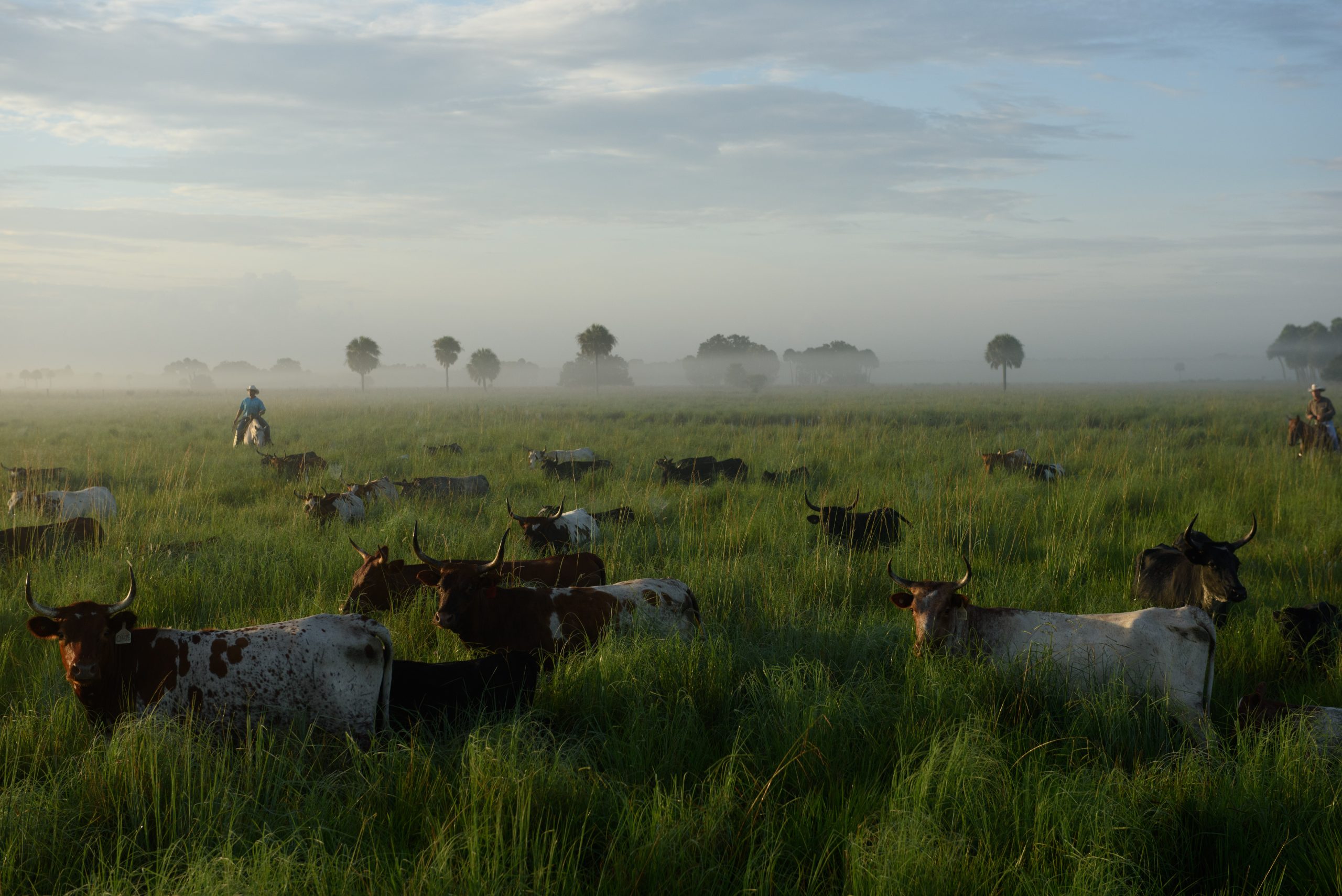
Photo: Buck Island Ranch by Carlton Ward
By Amber Aumiller, graduate assistant, Sustainability Office
For many of us, it is hard to envision a role for cows in land conservation. Out here in the West, cattle ranging has completely reorganized ecosystems over the last couple hundred years, and there are strong and complex opinions regarding the practice. The reality is that here in the United States we do range cattle, and we can never go back to exactly the way things were before cattle arrived on this continent. We may also never know every last impact of this past, but we can use what we learn from the past to guide and shape future practices.
This is the focus of Dr. Hilary Swain’s work, although not out West, but rather in Florida. On Tuesday, February 11, 2020, she will deliver her talk, “The confluence of biodiversity, ecosystem processes, and socio-economic factors in Florida ranchlands,” from 4 – 5 p.m. in room 210 of the Aline B. Skaggs Biology Building as part of the Global Change and Sustainability Center’s Seminar Series.
Dr. Swain has been the Executive Director of the Archbold Biological Station, sitting in the headwaters of the Everglades in south-central Florida, for 25 years. \The lands of Florida have been evolving with cattle for even longer than our Western plains have, and Dr. Swain’s work, overseeing the operations, research, and education at the Station, looks at reorienting practices of cattle ranching to a more ecologically productive, healthy, and meaningful relationship with the land. Land and cattle have shaped each other over the years but the relationship doesn’t have to stay unhealthy. Learning best practices for our current moment is a step forward in adapting and rehabilitating rangelands.
Archbold is a world-renowned field station connected to the University of Florida. “[It] represents everything I believe in: great science, active conservation and education,” says Swain.[1] Biological field stations provide wonderful opportunities for science to collaborate across disciplines, with private landowners, and with agencies ranging from local to global, informing conservation in powerful ways. The subtropical Buck Island Ranch that operates with around 3,000 head of cattle on Archbold’s 20,000-acre property is recognized by the Audubon Society as an “Important Bird Area,” and ranges land with a mix of native, semi-native, and improved (aka fertilized) pastures. This provides an opportunity to study best ranging practices in a collaborative way where overlapping goals can be taken into account quickly, with the ultimate goal of increasing the area’s biodiversity.
Buck Island Ranch has been collecting data as part of the field station since 1988, providing an environment to effectively study current land use in relation to historical uses, and to evaluate tradeoffs. “Archbold’s mission is to build and share the scientific knowledge needed to protect the life, lands, and waters in the heart of Florida,” says Swain.[2] Field stations provide the ability to study ecosystems and ecological relationships in unprecedented ways, providing insight into how we might adjust our methods to live more synergistically. As one of 18 nationwide USDA Long-Term Agroecosystem Research (LTAR) network sites, Buck Island Ranch is also helping to link the local ecological data of the ranch to larger ecological networks across the United States. Archbold Biological Station shines as an example of what it looks like to study the intersection of ecological concerns with economic ones, both words rooted in the Greek oikos, meaning home. The land we live on is a part of our home and learning how to coexist with the ecosystem processes of the land is perhaps the most essential adaptive quality of our times.
Come learn more from Dr. Swain about life on a large field station and the research being conducted at Archbold on Tuesday, February 11, 2020. Her talk “The confluence of biodiversity, ecosystem processes, and socio-economic factors in Florida ranchlands,” will be from 4 – 5 p.m. in room 210 of the Aline B. Skaggs Biology Building. As always, there will be coffee and treats, so bring your mug and enjoy!
[1] https://news.wgcu.org/post/hilary-swain-phd
[2] https://esajournals.onlinelibrary.wiley.com/doi/full/10.1002/fee.2023
